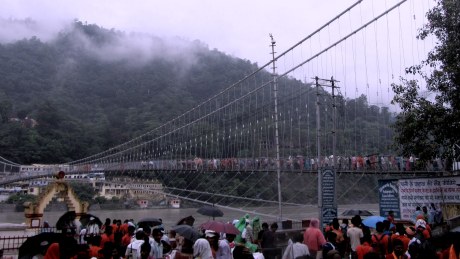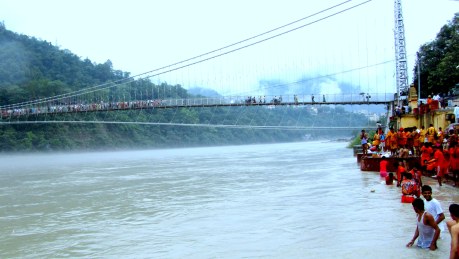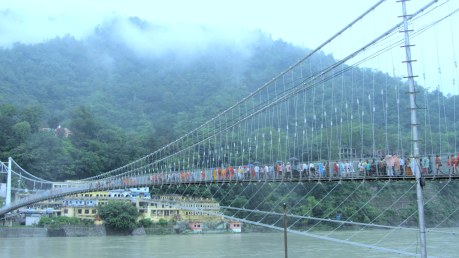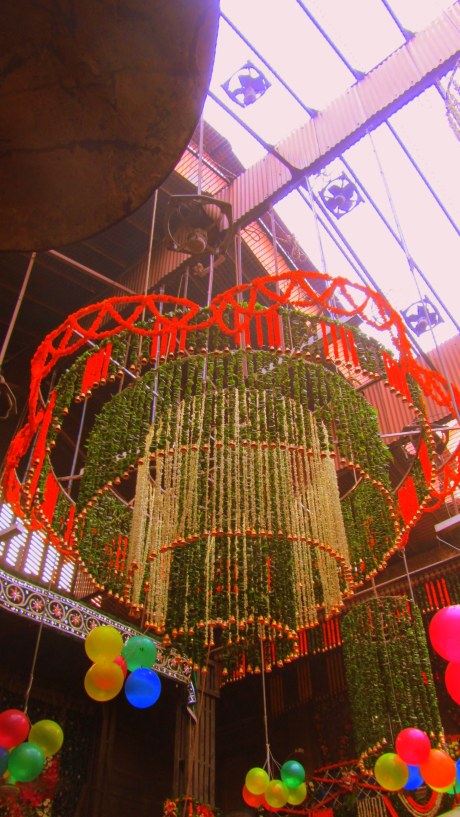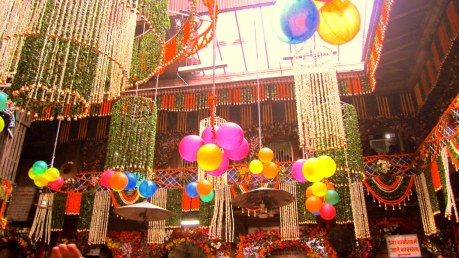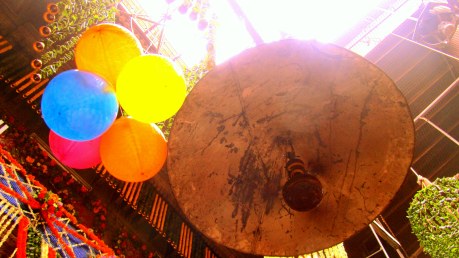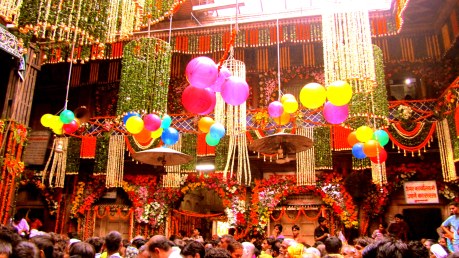These pictures were taken on a Sunday Evening during the monsoon month of Shrawan when the hundreds of thousands of pilgrims congregate at Hari-ki-Pairi in Haridwar, Uttarakhand to take a ritual bath in the Ganga river. More information on the pilgrimage (Kanwar) can be found at my other post
Badrinath temple is dedicated to Lord Vishnu and considered by many to be one of the most holy temples of India. Located along the banks of the Alkananda river in the hilly state of Uttarakhand, it is one of the four major Dhams in India. The temple is located on the banks of the Alakanada river, which eventually meets the Bhagirathi river to form the river Ganga at Devprayag in Tehri Garwal. Badrinath temple is open only six months a year – late April through Diwali in early November. Hundreds of thousands of Indian and Nepal Hindus make a pilgrimage to Badrinath Temple every year to perform the rituals of Pinda and Tarpan, which aid the deceased family members to assist them to cross over to their next rebirth.
Every year, thousands of followers of Lord Shiva come to participate in the epic Bol-bum pilgrimage, also known as “Kanwar”. Kanwars are community pilgrimages and are organized by village, municipal and neighborhood committees. The focal point of the pilgrimage is the bustling riverside town of Rishikesh and Haridwar. When the Kanwariyas arrive at Haridwar or Rishikesh in the state of Uttarakhand in the monsoon month of Shhrawan, they take part in ritual bathing on the banks (ghat) of the Ganga river. The Kanwars adopt the uniform of the Bol-Bum: saffron colored robes or shorts and T shirts. The pilgrimage revolves around the urns which they fill with Gangajal or the holy water from the Ganga river. Then they walk bare foot to the Shiva temple of Nil Kanth which is some 22 km from Rishikesh or 57 km from Haridwar. It is there that they pour the Gangajal on a statue of Lord Shiva. Then they return to Brahma Kunda at Hari-ki-Pairi (literally “footsteps of the lord”) in Haridwar and again collect Gangajal and make the long return trip home, often times on foot that can last several weeks, to a Shivalaya (a temple of Lord Shiva) near their home town. This rite is performed in their home towns once again where they pour the Gangajal on their local statue of Lord Shiva, then the pilgrimage of the kanwariyas comes to an end.
At the center of the fanfare is Rishikesh. Rishikesh can be divided into two parts: Ram Jhula and Laxman Jhula. Jhula, or “swing”, is a local colloquial term for a suspension bridge. The two suspensions bridges in Rishikesh are bustling with activities during the monsoon festivities. Legions of devotees come to find their place in the fabric of faith in India. The electric fervor brought by the pilgrims energizes the otherwise wet atmosphere and the multitude of saffron robes warms up the frigid, rainy day on the banks of the Ganga river.

Kanwariyas from Hissar District, Haryana on Ram Jhula as they Marvel at the Breadth and Beauty of their much beloved Ganga River
Standing on the banks of the Yamuna river in the town of Vrindavan, Mathura district of Uttar Pradesh is the highly revered temple of Banke Bihari. This temple is an important pilgrimage for the followers of the hindu Deity Krishna and his consort Radharani. Given the massive following that Lord Krishna enjoys, the temple is flooded with thousands of eager pilgrims who come from all corners of India and Nepal during the monsoon month of Shhrawan when the Jhulan festival takes place. Devotees of Lord Krishna come in droves to the Banke Bihari temple during this special time for the special unveiling of the Lord Krishna and Radharani’s statues. The statues of Lord Krishna and Radharani are in the classical Tribhaga mode where their figures are bent in the knee, hip and neck which is also known as “Banke”. The “Banke” is a type of posture closely associated with Lord Krishna.
The temple management committee vehemently opposes taking photos of the legendary Banke Bihari statues when they are unveiled for public viewing. Generally, these viewings are rather brief in nature and offer a glimpse of the statues that does not last longer than a few seconds at a time. None-the-less, the pilgrims and devotees visiting the Banke Bihari temple have an unrivaled fervor towards Lord Krishna and Radharani, which creates a highly energetic and colorful atmosphere inside the temple.
One will not fail to notice the kaleidoscopic array of colors swirling around the temple. Garlands and flowers hang on every wall for this special occasion, as the pilgrims rejoice the life and times of Lord Krishna and Radharani with bhajans and kirtans.


























